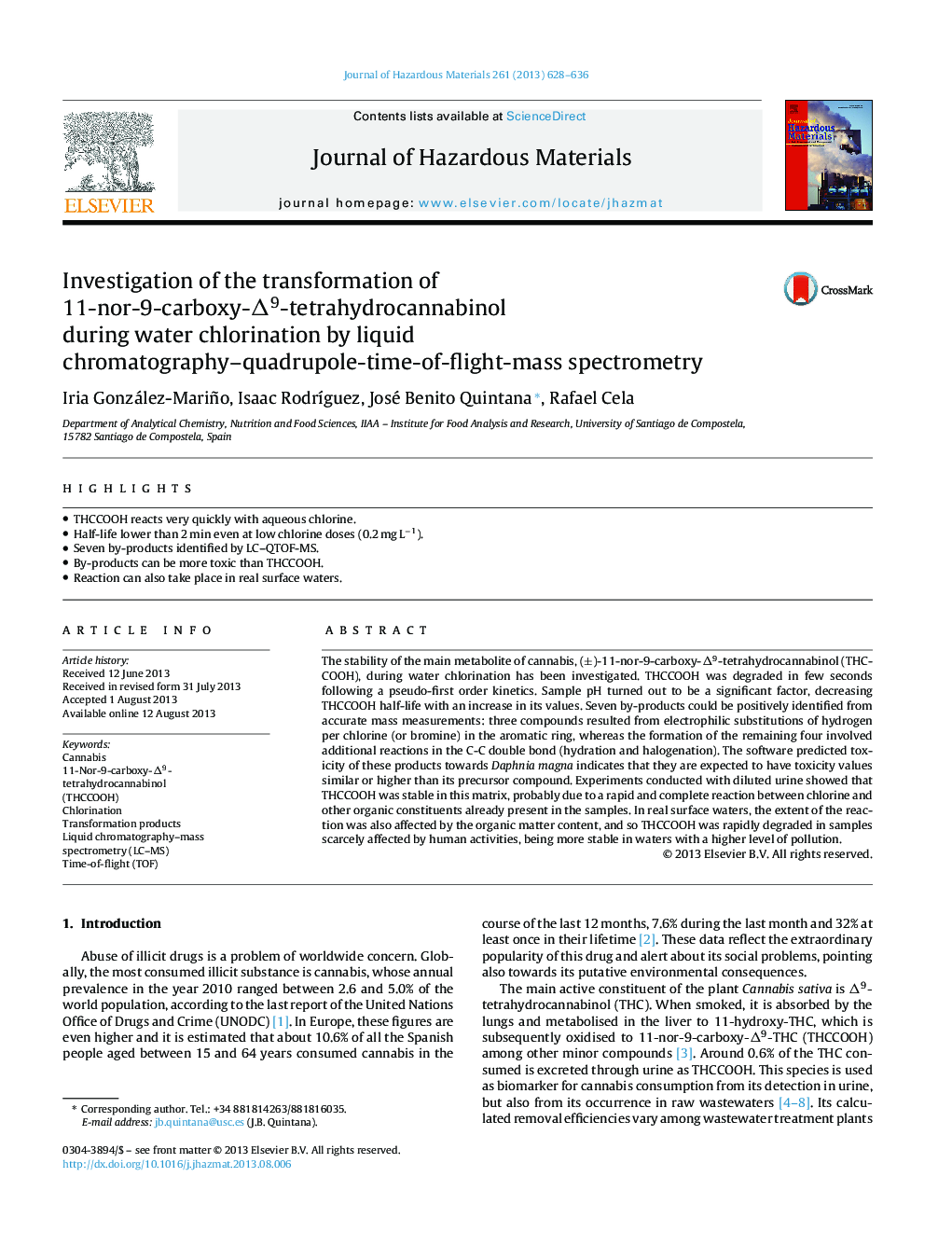| کد مقاله | کد نشریه | سال انتشار | مقاله انگلیسی | نسخه تمام متن |
|---|---|---|---|---|
| 6972170 | 1453098 | 2013 | 9 صفحه PDF | دانلود رایگان |
عنوان انگلیسی مقاله ISI
Investigation of the transformation of 11-nor-9-carboxy-Î9-tetrahydrocannabinol during water chlorination by liquid chromatography-quadrupole-time-of-flight-mass spectrometry
دانلود مقاله + سفارش ترجمه
دانلود مقاله ISI انگلیسی
رایگان برای ایرانیان
کلمات کلیدی
موضوعات مرتبط
مهندسی و علوم پایه
مهندسی شیمی
بهداشت و امنیت شیمی
پیش نمایش صفحه اول مقاله

چکیده انگلیسی
The stability of the main metabolite of cannabis, (±)-11-nor-9-carboxy-Î9-tetrahydrocannabinol (THCCOOH), during water chlorination has been investigated. THCCOOH was degraded in few seconds following a pseudo-first order kinetics. Sample pH turned out to be a significant factor, decreasing THCCOOH half-life with an increase in its values. Seven by-products could be positively identified from accurate mass measurements: three compounds resulted from electrophilic substitutions of hydrogen per chlorine (or bromine) in the aromatic ring, whereas the formation of the remaining four involved additional reactions in the C-C double bond (hydration and halogenation). The software predicted toxicity of these products towards Daphnia magna indicates that they are expected to have toxicity values similar or higher than its precursor compound. Experiments conducted with diluted urine showed that THCCOOH was stable in this matrix, probably due to a rapid and complete reaction between chlorine and other organic constituents already present in the samples. In real surface waters, the extent of the reaction was also affected by the organic matter content, and so THCCOOH was rapidly degraded in samples scarcely affected by human activities, being more stable in waters with a higher level of pollution.
ناشر
Database: Elsevier - ScienceDirect (ساینس دایرکت)
Journal: Journal of Hazardous Materials - Volume 261, 15 October 2013, Pages 628-636
Journal: Journal of Hazardous Materials - Volume 261, 15 October 2013, Pages 628-636
نویسندگان
Iria González-Mariño, Isaac RodrÃguez, José Benito Quintana, Rafael Cela,